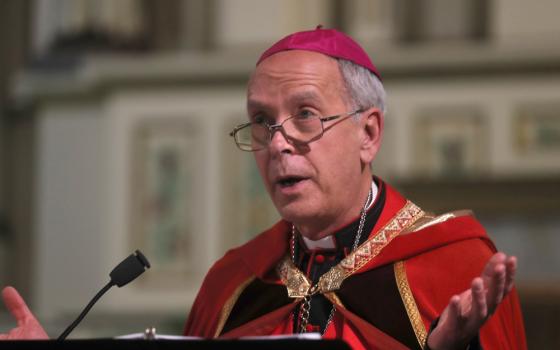As Catholic institutions, especially schools, multiplied rapidly in the 1950s, Pope Pius XII urged religious superiors to begin the modernization of their congregations. He mentioned specifically the abolition of outmoded customs, the modification of habits and increased attention to the professional education of sisters.
At the subsequent ecumenical council convened by Pius XII's successor, John XXIII, Cardinal Leo-Jozef Suenens, primate of Belgium, vigorously promoted the renewal of women's religious life.
Consequently, Vatican II urged religious communities to return to their biblical roots and their founding charisms and to develop a greater measure of engagement with the modern world.
Women religious, however, responded with more energy, creativity and enthusiasm than church officials anticipated, to the chagrin of more traditional nuns and ultra-conservative Catholics -- the very type of both constituencies that applauded, and even instigated, the recent investigation of U.S. sisters and of the Leadership Conference of Women Religious.
Life within religious communities of women began to change dramatically. The first indication came with the busloads of nuns, still in full traditional habits, who came out at night to hear theologians and biblical scholars explain the principal teachings of the just-concluded Second Vatican Council.
Such was their hunger for the theology and biblical scholarship that had permeated the council.
This sense of what Vatican II had accomplished was in striking contrast to the knowledge of bishops who came home to read back issues of their diocesan papers in order to review the news of the council and before facing their local newspaper reporters.
The sisters' awareness was also in contrast to that of priests, who would have been recognizable in their Roman collars, and who stayed away from these lectures because they didn't want to admit, to others and perhaps to themselves, that they had anything more to learn about the church and its theology. Their years in the seminary had been more than adequate -- or so they assumed.
But attending evening lectures was only the beginning for the sisters. They abandoned completely their outmoded customs. They changed their habits more radically than expected, though by today's standards not so markedly. And they signed up for theology and biblical courses now being offered in Catholic universities, especially, but not exclusively, in the summer.
Soon the sisters were better educated theologically and biblically than were many of the priests, who became more defensive about their status, particularly with the new emphasis on the role of the laity.
In a period of "barely 40 years," Sr. Sandra Schneiders wrote in an NCR article on Oct. 2, 2009, "they fairly well bridged the historical gap between their early modern European origins and postmodern American ecclesial and cultural reality."
Some Catholics were taken aback by what they interpreted as the speed of the renewal, but in actuality, Schneiders pointed out, the development of nonmonastic ministerial religious life for women had been slowly under way for almost four centuries.
The council had mandated a renewal for virtually all religious congregations, including the revision of their constitutions. In that regard, I can recall encouraging my graduate students who were members of religious communities to make their final research papers a comparative ecclesiological study of their communities' old and new constitutions.
Where these old constitutions had placed primary emphasis on the monastic side of religious life and only secondarily on the ministerial, the revised constitutions defined religious life as having "a single, integrated end."
But the most immediately visible change, though hardly the most important, was in the habit. After a period of experimentation, most renewed congregations successfully made the transition to simple contemporary dress appropriate to their quite varied ministerial lives.
Many older priests and sisters today look askance at some of the recently ordained and professed because their preference for traditional dress seems to mask a preference for an unrenewed religious and clerical life, as existed prior to Vatican II and even prior to their own births.
"If the habit was the emotional flash point of renewal," Schneiders wrote in her NCR article, "the broadening and full commitment to ministry" was the "spiritual substance at the heart of renewal."
I would repeat here the concluding words of my Thanksgiving column in 2009: "We should not trust the judgment of anyone for whom the habit issue is more important than the issue of ministry."
And I would also repeat the words with which I ended last week's Thanksgiving column: "We can never tire of singing [the sisters'] praises–in thanksgiving for all that they have done, and continue to do, for the People of God."
© 2011 Richard P. McBrien. All rights reserved. Fr. McBrien is the Crowley-O'Brien Professor of Theology at the University of Notre Dame.
| Editor’s Note: We can send you an e-mail alert every time Fr. McBrien’s column, "Essays in Theology," is posted to NCRonline.org. Go to this page and follow the directions: E-mail alert sign-up. If you already receive e-mail alerts from us, click on the "update my profile" button to add "Essays in Theol-ogy" to your list. |


